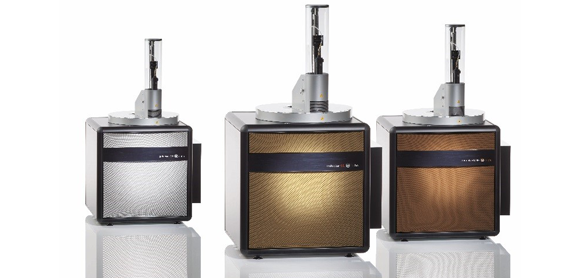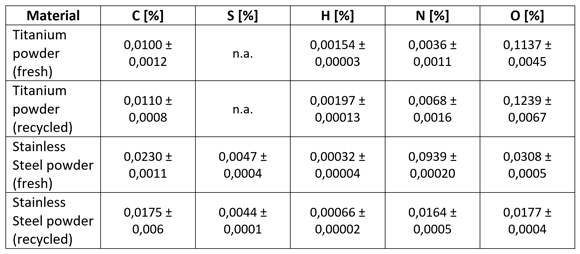Elementar offers elemental analysis solutions for quality control in metal AM
March 21, 2019

Elementar’s Inductar Cube line (CS, EL and ONH) (Courtesy Elementar Analysensysteme GmbH)
A recent survey of more than 1,000 Additive Manufacturing professionals indicated that many businesses are now spending more on AM and seeing a greater return on their investment. Companies are seeing the benefits the technology provides in terms of lead time reduction, cost-effectiveness and its capability to produce parts with complex geometries. However, key challenges remain with regard to quality assurance, and these must be addressed and resolved before AM can truly ‘go mainstream’ as a widely-used production technology.
One key area in which quality assurance is imperative is in regard to the materials used in metal AM. Failure to ensure that these materials are of the highest quality can significantly compromise the integrity of the final product, leading to AM products which are prone to breakage, or that fail to bind and adhere properly. However, quality assessment can be challenging with regard to AM materials due to the subtlety of the variables involved, especially when working without specialist equipment.
The alloy powders used in metal AM require a careful balancing of carbon, sulphur, oxygen, nitrogen and hydrogen content to ensure tensile strength, impact resistance, heat tolerance, resistance to corrosion, etc. Engineers who are unable to account for these variables will be unable to meet the quality standards expected by end-users, which may result in higher manufacturing costs due to production failures.
As manufacturers continue to tackle this challenge, elemental analysis instruments are becoming key to the quality control process for Additive Manufacturing. Instruments such as the Inductar® Cube range of inorganic elemental analysers produced by Elementar Analysensysteme GmbH, Langenselbold, Germany, make it possible to identify impurities within raw materials on an industrial scale. This helps not only to ensure that low-quality materials are filtered out, but also to grant engineers more control over the physical properties of the final product, and greater insight into how additively manufactured components will behave in various circumstances.
As the AM process requires the melting or sintering of different components to form an alloy, a precise understanding of how the chemical composition of the starting materials impacts the finished products is needed. This is because the elements that were present at the beginning of the process can be lost or changed during the heating process. The composition of carbon, sulphur, oxygen, nitrogen and hydrogen will impact on the physical properties of the final product.
By checking the quality of the finished item after the manufacturing process is complete, comparisons between the compositions of high and low-quality products can be made to identify which characteristics are causing the failure. Given that the elemental makeup of an AM product can change during the AM process, this kind of post-production evaluation is essential.
Additionally, elemental analysers can reportedly be used to maintain quality even when recycling leftover powder for a subsequent production run. This process is usually performed within an inert gas atmosphere, but the extremely high surface area of the powders can still mean that some oxidation takes place regardless, especially when AM system’s build chamber must be opened completely. By undertaking elemental analysis prior to reusing the powder, manufacturers can ascertain whether it is still fit for purpose.

Comparison of analysis results for fresh and recycled titanium and steel powders (Courtesy Elementar Analysensysteme GmbH)
Elementar’s elemental analysis solutions include the Inductar CS Cube, an advanced carbon and sulfur analyser for metallic or ceramic materials, the Inductar ONH Cube, for simultaneous oxygen, nitrogen and hydrogen analysis for metallic or ceramic materials, and the Inductar EL Cube, the first 5-element analyser for high-temperature elemental analysis of carbon, sulfur, oxygen, nitrogen and hydrogen for metals and other inorganic materials.
















